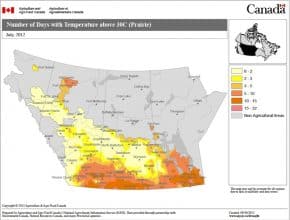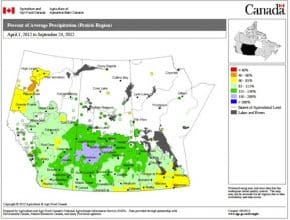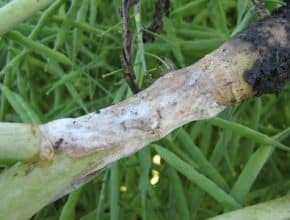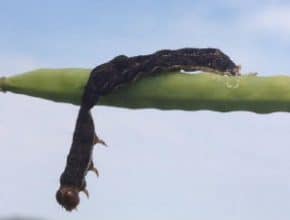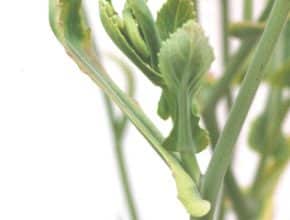Many canola growers harvested lower than expected yields in 2012. So what happened? Why did the canopy look good enough to yield much higher than it did? In many fields, it was quite likely a combination of factors, led by a very hot July. This week’s Canola Watch looks back on the year, and highlights these key contributing factors, providing…
September 26, 2012 - Issue 30
-
-
July was very hot, which is bad news for a cool season crop like canola. When daytime highs reach 28-29 C or higher, pollen viability and length of flowering drop off, and seed and pod abortion increase. July was also very dry for some regions. When heat and lack of rainfall are combined, the plant goes into survival mode. It…
-
-
-
We don’t exactly know why insects were more plentiful this year, but a mild winter and more canola than ever are likely factors. Achieving a plant stand in the range of 7 to 14 plants per square foot provides a buffer for some plant loss to insects. Scouting and spraying when populations exceed economic thresholds will increase the return on…
-
If nutrient reserves were not utilized because of environmental extremes, where are these reserves? How big are they? Soil tests will help determine this carryover. Because some may be concentrated at lower depths, growers may consider submitting 0-6” and 6-24” samples. If crops (including non-canola crops that will precede canola in 2013) had heavy biomass but low yield, nutrient in…
-
Canola needed 10 plants per square foot to deal with everything that came along in 2012 and still come through with a decent yield. A stubble count this fall will determine how many plants made it through to harvest…

